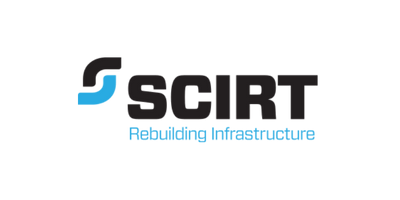
The Stronger Christchurch Infrastructure Rebuild Team (SCIRT) was set up to repair horizontal infrastructure in Christchurch, New Zealand, after the region experienced devastating earthquakes in 2010 and 2011. Using @RISK, the SCIRT team was able to accurately estimate the cost of the program, which armed decision makers with the confidence necessary to move forward with the rebuild plans. In June 2017, SCIRT completed its $2.2B program of work and disestablished itself, leaving a profound legacy of repaired assets, learnings and improvements to New Zealand’s infrastructure industries.
Background
On September 4, 2010, as darkness still engulfed myriad towns, the first earthquake wave rolled across the Canterbury Plains west of Christchurch, New Zealand, liquefying land and breaking buildings--but sparing lives. The South Island's largest city was left reeling, badly bruised but still standing after the 7.1-magnitude quake and numerous aftershocks.
A few months later, on February 22, 2011, a fatal 6.3-magnitude earthquake thundered through Christchurch, leaving 185 people dead and escalating the damage to infrastructure by an order of magnitude – peak ground acceleration during the earthquake (at 2.2g) was the highest ever recorded anywhere in the world. The city rebuild suddenly morphed into a multi-faceted, massive task beyond the usual jurisdictions. And the government took an extraordinarily ambitious move into an interventionist model.
Facing a rebuild of immense scale and scope, the government sought value for money, a quick, effective and flexible response, and integrity.
The destructive nature of the February quakes and bruising aftershocks required a high-level, innovative solution: a delivery vehicle capable of managing the huge scale and complexity of the infrastructure rebuild -- an instant organization that came to be named SCIRT (Stronger Christchurch Infrastructure Rebuild Team). SCIRT’s job was to provide a cost-effective and efficient vehicle to quickly get the city's civil infrastructure back on its feet.
SCIRT’s $2.2 billion five-and-a-half year program, which was completed in June 2017, was funded by the New Zealand Government and Christchurch City Council. It involved more than 700 individual projects across the city repairing and rebuilding underground sewage, storm water and fresh water pipes, wastewater pump stations, as well as roads, bridges and retaining walls.
Kerry Mayes
Consultant, SCIRT
Making an Estimate
In late 2011, the SCIRT Business Systems Team were tasked with estimating how much it would cost to fix Christchurch's horizontal infrastructure. Team Manager Matt Thomas brought in Kerry Mayes to apply a risk framework to the assessment. “While we had asset assessment information for a large portion of the thousands of assets, we needed a way to allow for all the different levels of uncertainty,” says Mayes. “That way we could give the best answer to local and national government and allow funding agencies to estimate how much money was going to be required.”
Previous estimates had been done without accounting for the uncertainties. “The funding agencies were concerned with the risk they were taking on in underwriting SCIRT's program of works,” says Mayes.
@RISK Reduces Uncertainty around Costs
To deal with the uncertainty, Thomas and Mayes turned to @RISK. “Everyone knew we were working with incomplete information and huge uncertainties, so it was important to be able to calculate and demonstrate the range of potential outcomes,” explains Mayes.
For each asset or group of networked assets, the estimated cost of repair was provided by design engineers with a subjective assessment of accuracy. Mayes modeled each of these costs with the Weibull statistical distribution in @RISK. “We used this distribution because it had the right sort of shape and the alternative data entry allowed projects to be fitted easily,” Mayes says, explaining that they used a rough order of magnitude for the variability based on the accuracy assessments of the assets. (e.g. +/- 10% for well-defined assessments through to +/-100% where little credence was given to the assessment.) “The Weibull distribution was remarkably well-suited to describing the likely outcome of projects,” says Mayes. “Later testing, by fitting the distribution to the normalized project outcomes showed a very high level of fit.”
“We also correlated some of the key inputs where these were most likely to impact on the total cost of the program. While this didn’t result in significant change to the result, it provided a higher degree of confidence to decision makers that we had taken everything possible into account.
SCIRT's @RISK Models Inspire Confidence in Decision Makers
After running these models in @RISK, Mayes and Thomas found that the expected cost of the program (the P50) was higher than the sum of the projects’ costs. This was due to the distribution chosen having a higher P50 than the "most likely."
For Mayes, the specific software features of @RISK he found most useful were the standard @RISK simulation which allowed him to get a feel for the variability of outcomes. He notes that correlation and "different" distributions “are really important as these are things that couldn't be easily done with spreadsheet macros.” The overall primary benefit from using @RISK for SCIRT was “the confidence it inspired in the decision makers. It gave us the ability to assess risk and show decision makers the potential impacts of risk. Without the tools, decision makers often avoid thinking about risk or take overly defensive decisions to avoid risk.”
The decision-maker’s confidence was well-placed; “Our estimate appears to be within 1-2% of the outcome on a spend of $2.2B spread across over 700 projects and tens of thousands of assets,” says Mayes.
